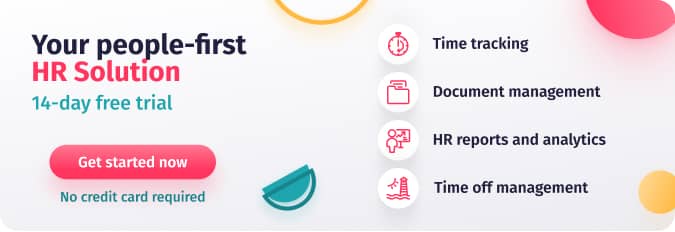On March 8th, the world celebrates International Women’s Day 2024 (IWD 2024). A day dedicated to eliminating gender bias and promoting equitable and nondiscriminatory employment practices.
While the date holds a unique and significant historical meaning, corporate efforts towards gender equity shouldn’t be limited to a yearly campaign on March 8th. Promoting gender balance in the workplace means making structural changes and realizing long-term objectives toward parity and inclusion.
In this article, we’ll discuss actions you can take on International Women’s Day 2024 to support women in the workplace for meaningful long-term impact.
International Women's Day 2024 Overview
The origins of International Women’s Day (IWD) go back to the industrial revolution in the United States. On March 8th, 1857, female textile workers went on strike in New York City to protest unfair working conditions and unequal pay. Protests continued to take place years after on the same date. International Women’s Day was eventually recognized as an official holiday on March 8th, 1911.
Fast forward to International Women’s Day 2024 and today’s realities for women at work. Women continue to face a gender pay gap and inadequate representation in leadership positions. According to the American Association of University Women (AAUW), women still only make 83 cents to every dollar earned by men. This wage gap only widens for women with intersectional identities that face both gender and race-based workplace discrimination. According to a US Government Accountability Office, black women make an average of 63 cents for every dollar that a white man earns. That’s almost 40% less than the average earnings made by white men.
It’s clear that there is still significant work that needs to be done to create equal opportunities for professional advancement and level out socio-economic disparities. To raise awareness about these issues, every year, a new IWD campaign theme is launched and promoted around the world. Last year’s campaign was “break the bias” and emphasized the consequences for women dealing with conscious and unconscious workplace bias. This year, the theme for International Women’s Day 2024 is “Embrace Equity”. Essentially, it’s a call for global action to create structural long-term change toward equitable business practices.
5 ways to support long-term change
There is no “quick fix” for companies to bridge gender pay gaps and eliminate unconscious bias across the board. The inequalities and biases that exist are the results of a lengthy, ongoing history of oppression and unequal decision-making power.
While many businesses want to promote the advancement of women in the workplace, it can be challenging to start from scratch. Raising awareness is a good way to start. However, there are more ways to make structural changes and provide women with more growth opportunities.
Here are some ways that business leaders can update their practices to create lasting change.
Revise current policies
The best way to start making impactful changes is to conduct an audit of company policies and look for opportunities to make practices more equitable. Here are some specific policies that you might want to consider revising:
- Parental leave policies- According to the Organization for Economic Cooperation and Development, The United States is the only country of 38 OECD member nations to not have laws that mandate paid parental leave, despite the fact that paid parental leave programs have several known benefits, including a 51% of reduction in hospitalizations for women who have recently given birth. All of the other OECD countries require employers to provide at least 12 weeks of paid leave for new mothers. Half of which also have laws that require paid leave for new fathers. Equitable parental leave programs are considered to be a top factor when it comes to closing the gender wage gap and promoting a more equitable labor force participation rate.
- Pay transparency policies- Research indicates that even in the world’s most economically developed countries, women still earn less than men while working in the same companies and the same positions. This goes to show that federal anti-discrimination laws aren’t enough to tackle bias and pay-based inequalities. It’s up to individual businesses to disclose pay scales, file regular gender pay reports and make sure that promotion opportunities are strictly performance-based.
Invest in employee training and mentorship
According to a joint study conducted by McKinsey and LeanIn.org, black women and Latinas are less likely to feel supported by their managers in their career development. Setting and achieving goals through mentorship programs is an emotionally intelligent solution that benefits businesses and employees alike. Particularly, mentoring programs boost levels of psychological safety and empower employees to obtain the specific skill sets that they need to develop professionally. Through this model, employers can create a more cohesive and communicative workplace culture.
Additionally, providing equal access to paid training programs can yield positive results. Especially for employers dealing with large educational and skill gaps between male and female employees.
Launch a Women in Leadership initiative
Women make up 50.5% of the population and account for over half of the workforce in the United States, yet according to Zippia, they fill only 35% of senior leadership roles and only represent a little over 10% of Fortune 500 CEOs. While these numbers have improved over the years, they are still a far cry from equal representation.
However, it’s possible to make changes in your organization that encourage women to fill senior-level positions. Consider your business’s strategies while offering promotions and making hiring decisions. Then, ask yourself the following questions:
- How are hiring decisions made? Is there a hiring committee? If so, do applicants feel represented?
- What kind of language is used during interviews and in job descriptions? Is there any evidence of gender code words or biased language?
- How does your company realize promotions? Are all employees encouraged to apply for career advancement?
Actively support female-owned businesses
Aside from encouraging gender equality within your organization, your business might want to consider extending support to female-owned businesses. Support initiatives might include partnerships, campaigns, or investments.
Additionally, you could implement team-building activities that support NGOs and gender equality. Consider offering transportation and paid time off for volunteer work. Initiatives like these give employees the sensation that they have made a difference in the lives of others and can improve overall levels of gratitude and collaboration.
Conduct regular pay equity analyses
When modifying policies, it’s best to make impactful actions based on research. By conducting an annual pay equity analysis, employers can quickly identify pay gaps and the possible causes behind them. To ensure equitable pay practices, salary information, including bonuses, benefits, and merit-based pay information is gathered and compared between employees across the organization.
For example, if you notice that women have considerably lower salaries than men, you might use data to find out why. From there, you might find that pay differences are due to underrepresentation in leadership positions. Consequentially, you can form a plan to bolster training and development programs that allow female employees to advance in their careers.
Why IWD is more than a day
Organizations shouldn’t just think of campaigns to support women every time March 8th rolls around. Striving for equality, transparency, and fair business practices should be a continuous priority. Not only is it an ethically responsible and progressive model for organizations to adopt, but there’s also a strong business argument for organizations to support their female staff. Women make up more than half of the working population and their active involvement matters.
By adopting inclusive leadership models and equitable practices, you are investing and supporting your team. And it’s no surprise that businesses that do so are more likely to hit their financial goals by up to 120%.
Inclusive company policies and practices can be especially beneficial for employers dealing with problems like quiet quitting and resignation. Employees who feel included in the workplace are more likely to feel appreciated for their efforts. This means that they are more likely to stick around, have higher motivation and productivity levels, and feel more committed to the organization.
Examples in the workplace
Here’s a look at some of the efforts companies are making to support gender equity in the workplace:
Adobe
Adobe offers a comprehensive range of benefits to employees, including programs to help workers pay for childcare and homeschooling supplies. Additionally, the software company offers development programs and mentoring opportunities to female employees through their Adobe & Women Employee Network (WEN). This program gives employees the chance to network and forge professional relationships with other women around the globe.
Additionally, Adobe supports career advancement through their Women’s Executive Shadow Program (WESP). This program matches high-potential employees with an executive partner. And in doing so, opens doors to new networking possibilities and provides the opportunity to experience a day in the life of a female leader.
Thermo Fisher Scientific
Over the past few years, Thermo Fisher Scientific’s efforts have included an Employee Resource Group for women (WERG). This program helps to ensure equitable hiring and promotion practices and provides support to women working in STEM fields. Additionally, the company uses publications to celebrate women in sciences and discuss gender disparity and imbalance.
Nestle
The world’s largest food and beverage company, Nestle, is trying to support female employees through their Gender Balance Acceleration Plan. This plan, in tandem with the company’s Senior Leader Development Roadmap, supports female employees through career pathing programs, mentorship opportunities, and critical succession planning.
Through their efforts, they have made progress toward gender parity. And by the end of 2022, they were able to increase female representation in senior leadership positions to 30%.




